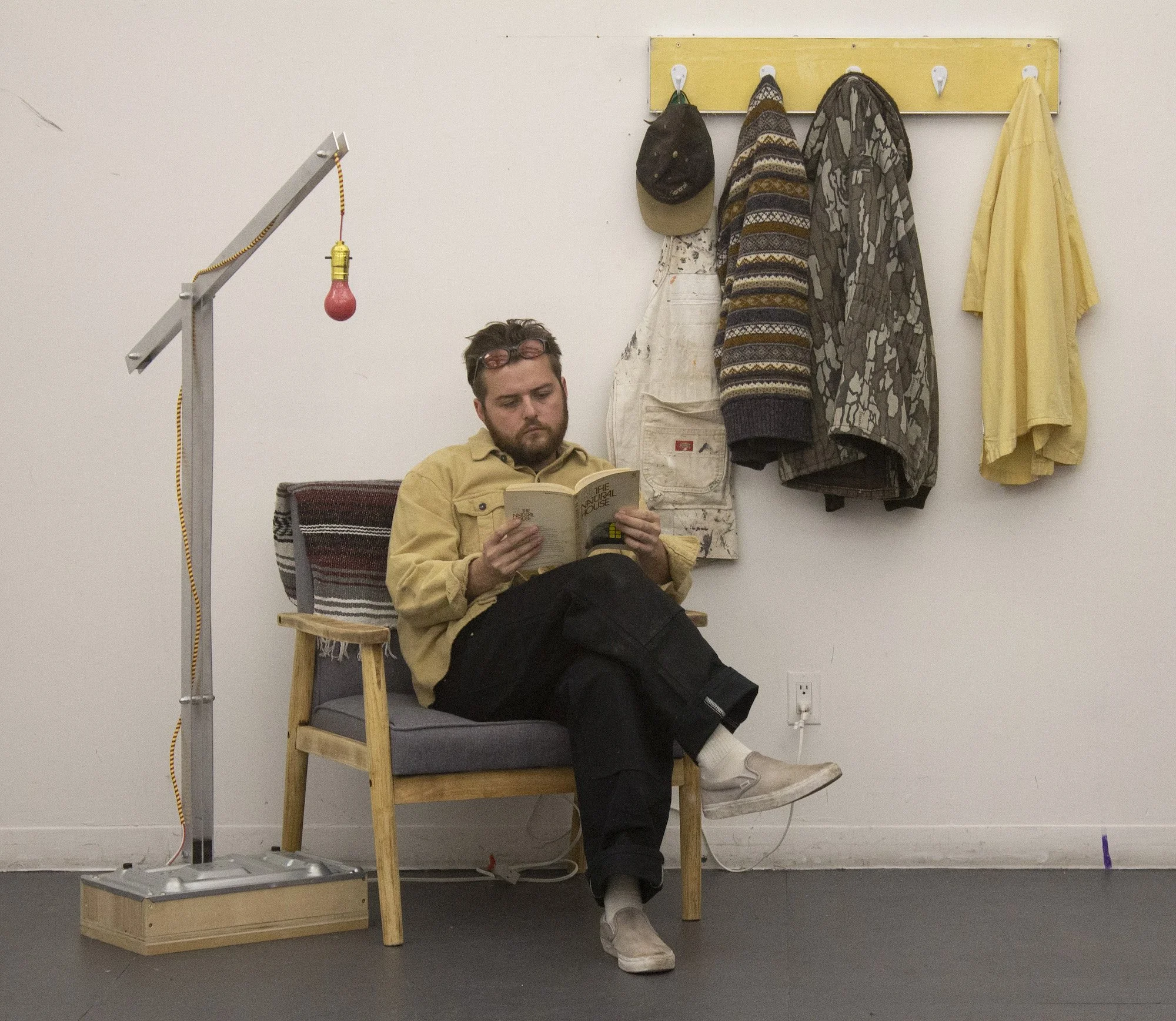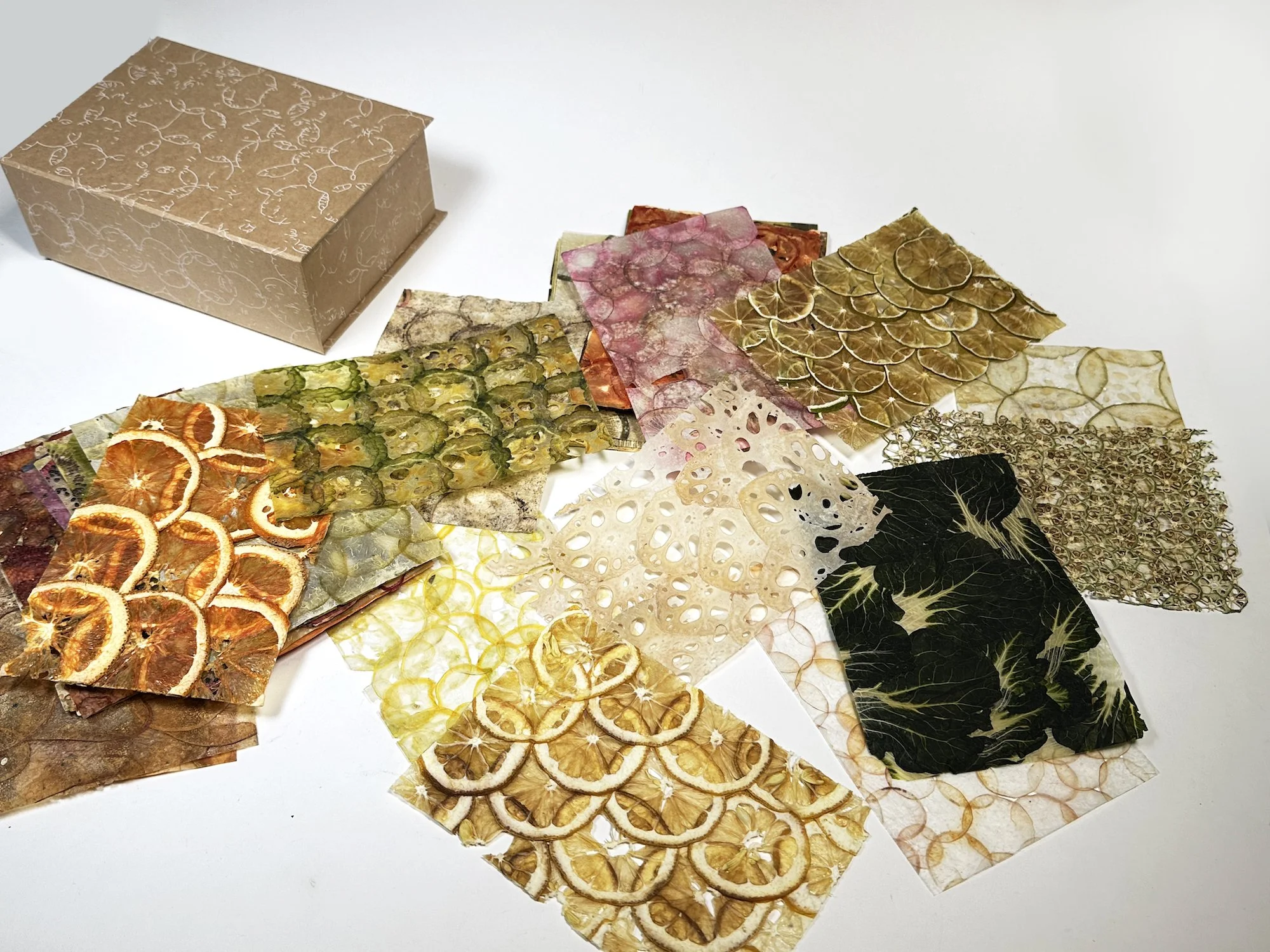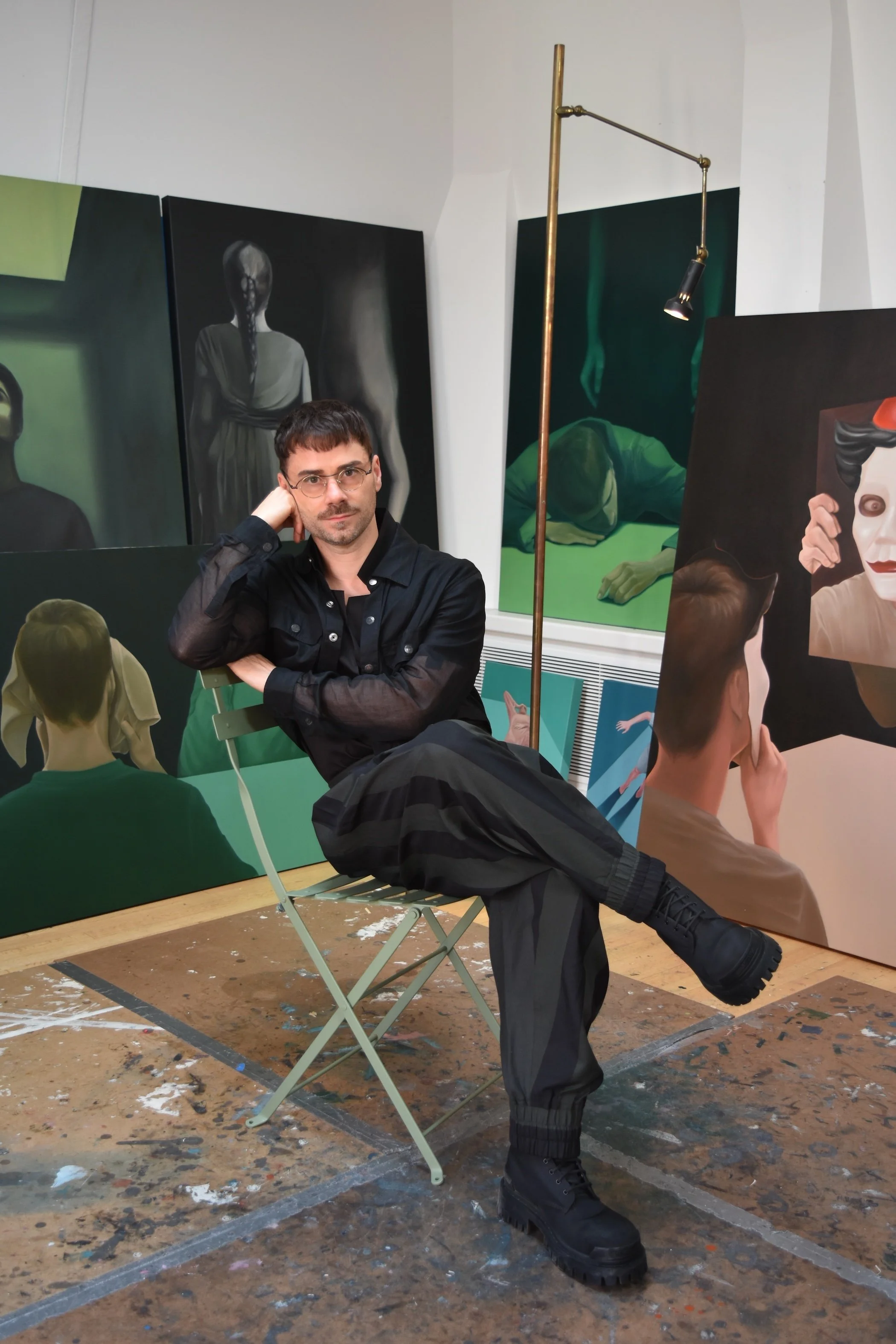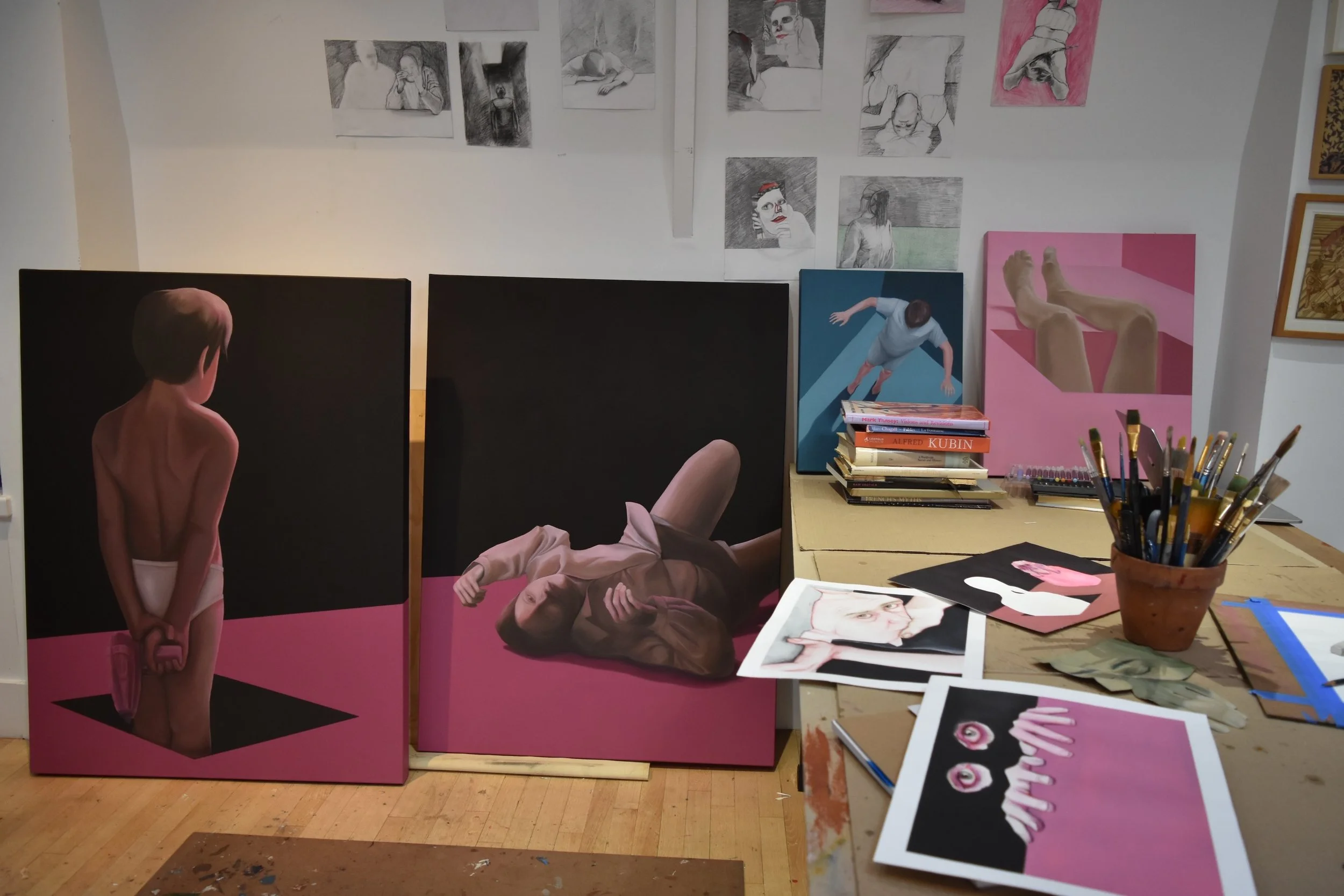Face to Face: July 2025
JODIE LYN-KEE-CHOW
Though originally trained as a painter, artist Jodie Lyn-Kee-Chow began integrating performance, sculpture, and costuming as early as undergrad. “I’d paint with fabric—stretch vinyl over objects. It was almost like I was making clothing for sculpture,” she recalled. Her move to performance was a natural evolution of this embodied, multidisciplinary impulse.
Leading up to her performance of The Picnic for the opening of Shared Grounds—an outdoor exhibition by Flux Factory and Finnish Cultural Institute in New York (FCINY)—Lyn-Kee-Chow has been extending the notion of shared space beyond physical points of gathering but instead considers communal labor, togetherness, joy, and leisure. Rooted in the artist’s Jamaican heritage and shaped by the urban context of New York, The Picnic starts from a sprawling, quilt-like picnic blanket constructed from vinyl tablecloths sourced from dollar stores. Vibrant and larger-than-life, this performance’s third iteration over a span of multiple years is titled Harvest of the Soft Sweet Sound. The artist explains: “Sweetness comes from the sugar refinery nearby,”—referencing the site’s history—“and then softness would be the garment itself, those plush cushions, the fruit . . . the sound of water meeting land.”
A new and intimate kind of theatricality is introduced to the plan of the performance. Performers will wear garments made from fabric scraps and act as ushers, guiding the audience onto the blanket. “It’s a change from earlier versions,” Lyn-Kee-Chow says. “They’ll be more involved, helping people engage with the piece directly.”
Despite the celebratory undertone of this feast of togetherness, the artist is also attuned to layered meanings and associations, such as harrowing urban legends around “picnics” in colonial America. She also noted that working with plaid fabric and the grid system is inspired by the gingham fabric that she saw on school uniforms and quadrille dresses during her childhood. In all its softness and sweetness, The Picnic is less a revival than a return: tactile, sonic, and deeply personal.
Shared Grounds is curated by Elina Suoyrjö and Meghana Karnik, with curatorial assistance by Rowena Hurme. The exhibition is on view from June 28 to August 10, 2025.
— Xuezhu Jenny Wang
AUSTIN CLAY WILLIS
Objects are seldom revered anymore. Fetishized certainly, but where is the care? While “repurposed” and “refurbished” have been rising trends in our times—and an ecological necessity—the affective life of an object also needs rejuvenation. Intimacies with our private possessions change following the conditions in which we collect, interact with, or remember them. Austin Clay Willis builds on such unique relationships, creating artworks that persevere through the transfer of ownership, loss of memories, and transformation of function.
A recent installation Room Set involved extensively detailed installations of personal space, including coat racks, tables, armchairs, shelves full of artifacts, rugs, lamps, beer cans, and so much more. Willis described it as a “proposition,” and in this lies an entire universe of possibilities. This was an environment, not just a specialized sensorium for individual objects. It is an artist’s studio, a friend’s living room, a hotel lobby, or even a therapist’s office—all depending on who you walk in with.
His material sensibility and physical playfulness enable him to shape space such that the audience is not only encouraged to navigate his installations but also feels comfortable while doing so. In this exploration, one is bound to find some path into his objects. The very potent functional core of his art is emphasized in the particular aesthetic he has developed through a rugged and unpolished MDF (medium density fiberboard) and plywood: there is work yet to be done.
Beyond visual style, Willis’s language has bloomed through the transformations of found objects and his private possessions that found new life in his studio. Stories need not be remembered as long as there is the foundational acknowledgement that there was once a different narrative attached to the object in question. Whether one dives into the depths of a watch as a witness at a memorial service over Zoom or an empty can of beer as a residue of last night’s interactions, it is the acceptance that each thing has its own weight and direction that drives the engagement forward. No story is kept hidden, and no story is actively narrated: they exist as private beings whose entirety will only be known through an intimate dialogue—how deeply viewers want to engage is up to themselves.
As unique a structure of values as Willis might have in personal life, the value of each object is constantly up for a challenge and negotiation—not just as art but as tools that can and will continue to be used.
— Abbas A. Malakar
JENNIFER SHIN
You can almost taste them. “Are they edible?” Jennifer Shin has been asked this question too many times. Making paper out of fresh produce comes with a unique expectation and excitement in her audience’s approach: to actively try and experience the art not just visually but through touch, smell, and taste as well. You use all your senses to experience food, but here you only see it—the desires that build up question boundaries and limitations. What are we entitled to in an artwork?
There is, after all, a grave fragility that produces an immense anxiety in the display of these papers. Not only are they hard to make, but they are also incredibly delicate. She cuts the fruits and vegetables into thin slices, lays them out slightly so that they slightly overlap, and presses them down with concrete blocks to let them dry and compress into one solid sheet. Jennifer Shin transforms the most temporary of materials into something approaching permanence. Each of these is then an embodiment of beauty, each slice having become a motif of what it once was, devoid of any articulating structures or adhesives. The technical process produces results that are beyond control—producing colours, shapes, and effects far beyond possible foresight. It is a constant play between natural processes and a need for order, something that might have originated in her fascination with printmaking.
It was in the process of developing as a printmaker that she began exploring papermaking for her practice. Later, it turned out that papermaking became the significant majority of her practice. As good as Shin is at drawing, she is not keen on producing images on paper, her focus being the material itself—a meticulous craft she has dedicated herself to perfecting through meditative diligence. Making paper is an ancient art, and in Shin’s practice, the paper itself has become an artwork.
She has also made books by stitching and reconstructing entire vegetables, quilts, and envelopes. Most recently, she has started making children’s toys, origami boats, and puzzles. As versatile as any other paper, and just as potent in their possibilities, each of Shin’s papers is capable of producing a palpably visceral experience of their materiality.
She envisions her artworks as part of larger interactive platforms at social gatherings, most importantly those that include food—events that complete the cycle of life from the fresh produce to the motif-pixel building the paper.
— Abbas A. Malakar
DRAGAN STRUKELJ
When Dragan Strukelj opens the door of the apartment where his studio is located, you can see a painting on the wall that depicts the legs and arms of a person hanging. Though the top of the body is not part of the composition, it is clearly a man. The striking pink of the background contrasts with the dark blue trousers and the pale, almost grey color of the ankles, feet, and arms. The image is ambiguous. What is that man doing? Levitation could be a person dancing or ascending in a magical way, but instead it is the depiction of the death of his grandfather, whom he never met. This tension between the ethereal title, the vivid colors, and the subject matter is present in many of Strukelj's works, which explore human complexity and unveil personal stories and collective concerns, such as death, loss, and freedom.
Strukelj moved to the United States from Bosnia almost ten years ago to work as a dancer. He always knew he wanted to be a visual artist. When the opportunity arrived, he embraced it. New York was the place to become a visual artist.
The corridor from the main rooms of the apartment to his studio is covered with art—paintings by Paula Rego, watercolors and sculptures by Irish artist Claire Morgan, drawings by Louise Bourgeois, a piece by Chantal Joffe, among others. Strukelj is part of an artist residency that the New York-based art collector and patron Kim Manocherian runs at her place, which aims to provide a space and visibility for contemporary artists.
Strukelj’s studio is full of new work. “When I start a new piece, I spend hours, days inside the studio until I finish. I only know how to express myself through painting.” The human figure plays a central role in his compositions. He portrays people in different abstract, decontextualized spaces that evoke psychological spaces full of tension and strong emotions. “There is always a narrative in my work. I speak about identity and transformation, through which I explore the necessity of liberating from inherited ideological patrons and expectations,” he says. Woman on the Floor, from his series Boxed In, portrays a woman wearing a mask in a dark, unknown place, having fallen on a striking pink floor. The mask depicts an expressionless face, and the position of her body confuses the viewer as she can be rehearsing a choreography or escaping from something. In Mask, from Table for Two, one of his most recent series, the artist portrays himself reflected in a mirror in different surreal scenarios wearing a mask that covers his face. The tension between self-perception and distortion is palpable. He plays with mystery; there is always something hiding and not fully revealed.
Strukelj and Manocherian met in 2017, during a dancing class that he was teaching. What started as a lesson turned into a daily commitment over the course of many years. After the COVID pandemic, they reconnected, and Manocherian was astonished by his work, which compelled her to reopen the doors of her space and re-launch the artist residency. Strukelj’s work is now part of her collection, titled Scheherazade after the legendary storyteller in One Thousand and One Nights. As in the myth, her collection is a living narrative of her life and interests, but it is also one that speaks of survival, endurance, and rebirth. Strukelj’s pieces cannot resonate better within these walls, accompanied by works that delve into visceral, strong feelings that are both timely and timeless.
— Montserrat Miranda Ayejes
JOËL BRODOVSKY-ADAMS
In a spacious, glass-doored studio at the Museum of Arts and Design, Joël Brodovsky-Adams is hard at work assembling what could best be described as ceramic chimeras—spliced and stacked sculptural pieces that flirt with the functional but have a calculated theatrical flair. A current artist-in-residence at the Museum of Arts and Design, Brodovsky-Adams brings the physicality of clay into a space of textured ornamentation and joy.
Brodovsky-Adams’s pieces are fun, exuberant, and activated by color and zoomorphic shapes. Rooted in craftsmanship and the physical, meditative process of making, Brodovsky-Adams’s practice is also imbued with an irreverent sensibility that draws from queer nightlife and the politics of pleasure. There is also a distinct refusal to draw hard lines between sculpture, furniture, and even performance. Right in front of his studio door is a floor lamp with an undulating black-and-white pattern, curved in a formation that is simultaneously inviting and fragile. The viewer can pass their hands through the circular openings on the stem of the lamp, but there’s such material and gravitational delicacy that the piece resists easy access. Its shape is also somewhat reminiscent of the caduceus or corals. On the display pedestal visible through the studio window, a three-legged vase-like chair pushes the boundary of what it means to be a container/mediator of the body. When furniture no longer promises security or optimal service to physiological needs, how does it hold value? The layered associations allow one to celebrate—in an embodied, vision-as-tactile way—the artfulness of objects that frequently occupy arenas of production and retail.
Brodovsky-Adams’s studio is full of modular components waiting to be assembled: bulbous vase-like sections, bowls, and what seems to be handles for the vessels—each part autonomous yet waiting to be claimed by a whole. Leaning into the tension between function and fantasy, Brodovsky-Adams’s sculptural objects seduce the eyes or throw the viewer off just enough to slow them down.
— Xuezhu Jenny Wang







